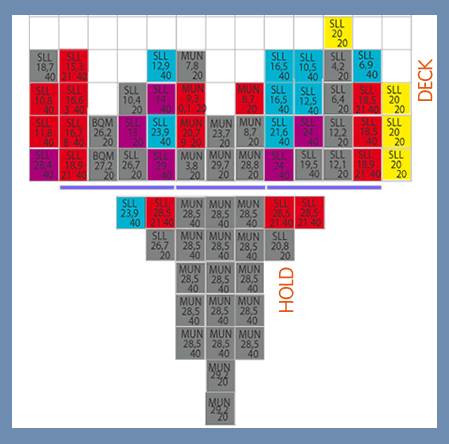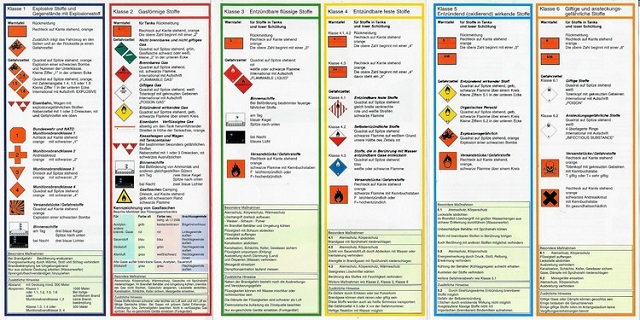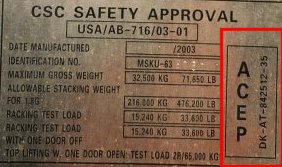Up-Coming Rules on Packing and Stacking

Op-Ed by Erik Kravets, co-founder of legal firm Kravets & Kravets
We recently glanced at the new SOLAS rules with respect to shippers weighing containers and providing verified gross mass, along with some of the changes harbors are making to adjust. Now we take a step back with an overview of the broader picture that is presently coming into focus through the anticipated new Cargo Transport Unit Code (CTU Code) from the Economic Commission for Europe, fresh SOLAS Chapter VI provisions relating to container stacking and ship stowage plans and revisions to Chapter 7.3 of the International Maritime Dangerous Goods Code (IMDG Code) which discuss permissible levels of wear and tear for packaging.
Many of these more stringent rules will begin around July 2016.
SOLAS Chapter VI and stowage plans
 A stowage plan's reliability can only be as good as the information available to the planners, so if certain containers are declared as being especially light by the shipper and, subsequently, are loaded high above deck, it could damage or over-strain the lashing equipment. Also, unintentionally top-heavy ships are always at greater risk of ocean-going instability.
A stowage plan's reliability can only be as good as the information available to the planners, so if certain containers are declared as being especially light by the shipper and, subsequently, are loaded high above deck, it could damage or over-strain the lashing equipment. Also, unintentionally top-heavy ships are always at greater risk of ocean-going instability.
A cross-sectional view of a stowage plan.
For the purpose of verifying the weight of containers provided by the shipper, either each individual container must be weighed by a certified weigh station or a specific calculating procedure must be employed and signed off on by a public or private authority. The key point that must be taken into account by the shipper is the timeliness of the declaration made to the carrier, since otherwise the containers must be weighed directly in harbor before loading. We have discussed (in German) what sort of new equipment is being installed by some harbors, like Strainstall's real-time container weight verification system. If impossible, the loading of the cargo must be refused, and SOLAS signatory states are obliged to investigate compliance.
Chapter 7.3 of the IMDG Code and dangerous goods handling
The biggest risk in dangerous goods handling comes from packaging that has been worn out or is damaged and which, as a result, no longer provides the requisite protection. It is sometimes tricky to distinguish ordinary purely aesthetic wear and tear from functional defects. And complicating that matter even further, packaging that appears to only have aesthetic wear and tear may, due to the rigors of an ocean voyage, suddenly develop a functional defect.
These are a few of my favourite things...

The German Federal Agency for Material Research (BAM, Bundesanstalt für Materialforschung und -prüfung) has issued a guidance for packaging defects in air freight (Leitfaden zur Beurteilung mängelbehafteter Versandstücke im Luftverkehr), which some industry circles also apply to maritime packaging. The guidance, unfortunately, is from 2005 and, of course, the security requirements for air freight are different from those for ocean carriage. While it is never bad to have inspiration to draw from, the arguments courts could potentially use to punish anyone who relies on the BAM guidance are evident; thus, it may be wise to exercise more scrutiny and common sense.
International Convention on Secure Containers (CSC) and the CTU Code
 CSC and the CTU Code contain rules on the required durability and weight tolerance for containers, and it is always a good idea - if only to prevent massive insurance claims for cargo damage - to be conscientious about inspecting containers and taking damaged ones, as necessary, out of circulation. After all, the owner/operator of a container is liable for the container's security and reliability and is required to inspect his containers regularly.
CSC and the CTU Code contain rules on the required durability and weight tolerance for containers, and it is always a good idea - if only to prevent massive insurance claims for cargo damage - to be conscientious about inspecting containers and taking damaged ones, as necessary, out of circulation. After all, the owner/operator of a container is liable for the container's security and reliability and is required to inspect his containers regularly.
Captains should take heed to examine containers to make sure they have the right compliance stickers on them, and any container lacking such a sticker should - at least - be flagged and, depending on the circumstances, be refused carriage. The sticker on the container will either have the year and month of the next inspection or the letters ACEP (meaning: "Approved Continuous Examination Program"), meaning that the shipper's containers are routinely inspected.
Make sure, if possible, that each container has the right sticker.
The new CTU Code has rules for intermodal transit which will be looked into later, but before 2015; indeed, the CTU Code is set to enter into force later this year (i.e. 2014). The Maritime Safety Committee of the International Maritime Organization already adopted the CTU Code and of particular interest to captains is Chapter 13, which contains rules and instructions for practical application.
These are sure to be a rich source of guidance, since the CTU Code provides these specifically for the purpose of training and education. Bear in mind that when in transit to the United States, as captain, one is not only responsible for what happens on board; rather, if involved in an intermodal chain (which is the rule), mishaps that logistics providers on land cause may lead to liability on the part of the ocean carrier. That means these new CTU Code instructions will need to be internalized and transmitted to intermodal partners.
